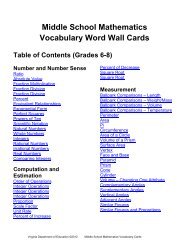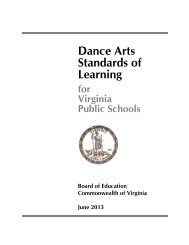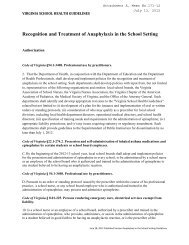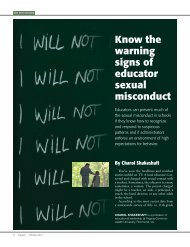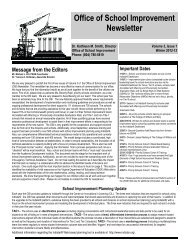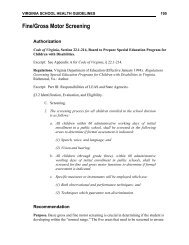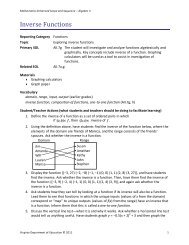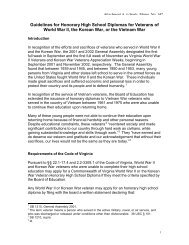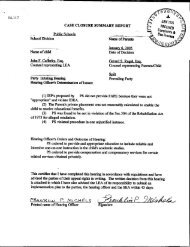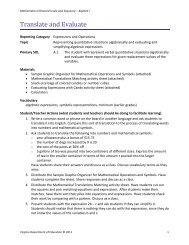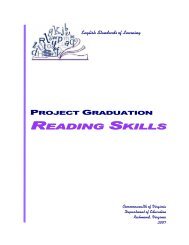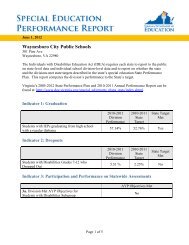What Makes Something Alive - Virginia Department of Education
What Makes Something Alive - Virginia Department of Education
What Makes Something Alive - Virginia Department of Education
Create successful ePaper yourself
Turn your PDF publications into a flip-book with our unique Google optimized e-Paper software.
Session 3.10 – Square-Meter Habitats: Observations 2, 3, & 4<br />
Teacher Questions & Notes<br />
Procedures<br />
symbols should be fairly small and simple so that they will<br />
have room to add other items to their map. Have each<br />
student add the landmark symbols to their map, both on the<br />
map and in the map legend.<br />
c. Have the students assemble into the same group <strong>of</strong> students<br />
with whom they conducted the first square-meter<br />
observation.<br />
d. Have each group decide on a symbol for the group‟s square<br />
meter and add it to their map legend. Again, remind the<br />
students to keep the symbols fairly simple and small.<br />
e. Have each group add their own square-meter symbol to their<br />
maps.<br />
f. Give each group an opportunity to share with the class the<br />
symbol and the location <strong>of</strong> their square meter. Have all<br />
students add each group‟s square-meter symbol to their<br />
Schoolyard Map, both at the location <strong>of</strong> the square meter on<br />
the map and in the map legend.<br />
-<strong>What</strong> differences did you notice?<br />
-Why do you think these differences<br />
happened?<br />
-<strong>What</strong> didn‟t change?<br />
-Why didn‟t it change?<br />
4. Take the class outside with their Square-Meter Habitat Group<br />
Record sheets and their equipment (meter sticks, string, pencils,<br />
thermometers, and magnifying glasses) to conduct their second<br />
observation <strong>of</strong> their square-meter habitats.<br />
5. On the Square-Meter Habitat Group Record sheet have the<br />
students draw observation #2 in another grid and record the data.<br />
6. When the class returns to the classroom, have students list any<br />
differences between observation #1 and observation #2 on the<br />
Schoolyard Map sheet.<br />
7. Gather as a class to discuss differences they noticed.<br />
8. Choose two other observation times. These may be done on the<br />
same day but at different times. Discuss how the time <strong>of</strong> day<br />
may cause changes to their habitat sites.<br />
-<strong>What</strong> are the elements <strong>of</strong> a bar graph?<br />
-<strong>What</strong> scale should we use?<br />
-<strong>What</strong> title should we use?<br />
9. After all four observations have been made, create a class bar<br />
graph on chart paper or on an overhead transparency to represent<br />
104<br />
<strong>Virginia</strong> Animals and their Habitats<br />
Topic3



